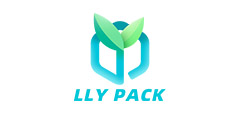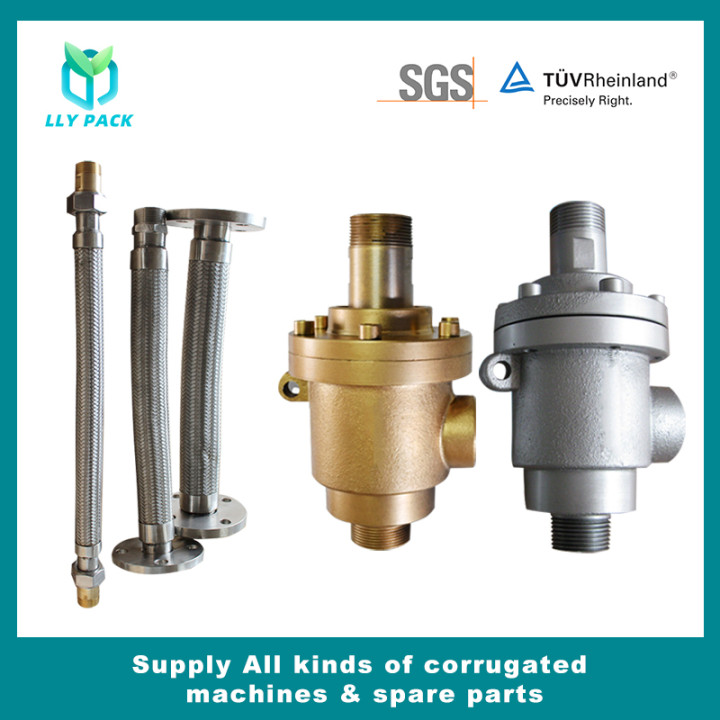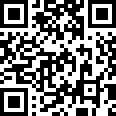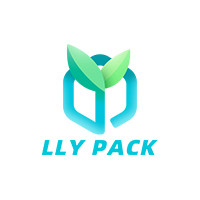So far we have adopted a two-step process for the printing of corrugated board, that is to print the surface layer first and then laminate it together with the corrugated medium. This method should be replaced by a one-step approach. Now, Roland 900 has been able to directly print G-type corrugated board (with a corrugation height of 0.55mm), as well as direct printing of F-type corrugated board (with a corrugation height of 0.75mm). This type of corrugated cardboard is particularly suitable for transport and display packaging, compared to printing G. Corrugated board needs some improvements. This particular device described herein can be equipped on new or modified presses. It can be used to print solid cardboard and corrugated board up to 1.2mm in thickness, and even thicker cardboard, depending on its hardness. The main improvement is in the aspect of the continuous paper, that is, the use of a staggered synchronous wheel plus an adjustable paper guide to reduce the diameter of the feed roller. In this way, only slight bending occurs when the paper enters the printing press. The structural characteristics of the cardboard surface require that the pneumatic side stop paper gauge be changed to the gauge, which is easy to do. A trapezoidal wheel mounted on the Transferter prevents the cardboard from entering the press too quickly.
First, printing corrugated board directly on the offset printing machine
In the past, printing corrugated board using offset printing required two operations. This means that the surface layers on both sides of the corrugated board may be printed directly into different qualities. If the printer does not have its own lamination line, this will lose the corresponding business opportunity. Therefore, printing of corrugated cardboard for transport packaging can be completed in one operation using offset printing, in accordance with the required quality, and will be a more competitive step forward. Because the transport package has two functions at the same time: to provide transport protection and as a promotional tool.
Offset printing has more advantages than flexo printing: 1 The working time for offset printing is much shorter. Making a new plate is usually completed within one hour, which means that even a short version can be produced economically. The quick change function can change the text on the package within five minutes. Information about the current special promotional product can appear on the shipping package. 2 Offset printing plates are cheaper than flexographic plates. Flexo is usually produced by a professional company, that is, it takes one day to modify the flexo. 3 High degree of offset printing. Moreover, the quality of offset printing is good, especially for cable products. There are no jagged edges in the text and lines, and the color is bright.
Second, corrugated board: a substrate with special properties
There are two types of commonly used corrugated cardboard: single and double layers. Only single-layer corrugated board can be directly printed by offset printing. The size varies due to the different knurling rollers used in the production of corrugated, and there is no standard for thin corrugations. The maximum thickness of F-type corrugations is 1.2mm. Ideal for transport packaging. Therefore, MAN Roland's designers are dedicated to the study of F-type corrugated board printing. The test focused on continuous feeding. As long as the corrugated cardboard is flat and has a good edge, it can fully achieve a printing speed of 11,000 sheets per hour or faster.
Corrugated board is not a standard product, and the quality of printing that can be achieved and the operation on the press vary depending on the manufacturer of the corrugated board. In order to obtain a print quality that meets quality requirements, corrugated board manufacturers and printers need to work closely together. The results described in this article come from corrugated board manufacturers and our experience.
Due to structural features, the surface of the corrugated board is not as flat as ordinary paperboard, so certain measures must be taken to achieve the required quality. Offset machines can only print paper that can be fed relatively evenly and evenly. MAN Roland has developed paper guides for the continuous board.
The edge of the paper on the paper tray must be stacked very straight. Restacking and damaged paper will affect the economic benefits of direct printing on corrugated board. Stacks of paper are piled on corrugated cardboard production machines, and manufacturers do not ship them back to the factory. As a result, the edges of the paper pile are easily damaged during transportation. The only way is to allow the board to feed the printer directly from the tractor tray. This requires printers and corrugated board suppliers to agree on how to do the delivery of the material.
Third, the "seesaw effect" on the quality of the
As with flexographic printing, the "seesaw effect" also limits the quality of offset printing. Due to the uneven structure of the surface of the corrugated cardboard, the pressure at the “wave valley” of the cardboard surface at the time of ink transfer is less than the pressure at the “peak”. As a result, less ink is transferred to the troughs. The flatter the corrugation, and the smaller the corrugation distance, the smaller the seesaw effect and the better the printing quality. The greater the corrugation spacing, the higher the corrugation, and the greater the ability to withstand the stacking pressure of the corrugated board. Other factors include the type of face paper and corrugated paper used. Our designers conducted a large number of tests to deal with this phenomenon, and came to the conclusion that increasing the pressure did not improve the problem.
1, increase the amount of paint to get better results
The results obtained with one coat of the surface layer (Kemiart Lite paper, gram weight 185 g/m2, coating 7 g/m2) were used. With this slightly coated paper, the wavy structure is very noticeable, possibly due to poor transfer of the ink. It can be clearly seen that at some "valleys" there is no ink transfer in the past. Using standard pressure settings, the number of screen lines does not work for the jaw structure. Different scale blocks with different screens on the GATF test board do not have visual differences in the seesaw structure.
In contrast to flexographic printing, offset printing requires a highly coated surface so that the offset ink adheres to the coating and produces better results. There was also a seesaw effect on Kemiart Lite paper with a 15 g/m2 coating, but this was not as pronounced. The use of well-coated kraft paper as the surface layer of corrugated board can be considered in the future, because this research and development is only the beginning. We did a new test to see if adjusting the blanket could make the problem better.
2, by adjusting the rubber roller lining, greatly reducing the seesaw effect
Test using a variety of different standard blankets. Tests have shown that blankets have a considerable effect on the presence and extent of seesaw effects. By adjusting the blanket lining, the seesaw effect can be almost completely eliminated. At the same time, MAN Roland's engineers also discovered other advantages: Since the corrugations were not compressed during the printing process, the register deviation between the first printing unit and the subsequent printing unit was greatly reduced.
3, ink also has an impact
The use of offset inks also has an effect on the seesaw effect. In the printing process, when the ink stays on the fast absorbing coating surface of the surface layer for a longer spreading time, the seesaw effect is smaller.
EnglishEspañolPortuguêsDeutschहिंदी日本語ខ្មែរNederlandsالعربية한국어मराठीMalagasyItalianoPolskiSvenskaελληνικάPусскийภาษาไทยTürkShqipMagyarViệtSamoaМонголMaltiIndonesia FrançaisMelayuҚазақшаYorùbáবাঙালিעִברִיתGàidhligSomaliEesti keelKreyòl Ayisyennorskčeštinaفارسیతెలుగుမြန်မာBosanskiMaoriქართულიRomânăбеларускіУкраїнськаతమిళGaeilgeSuomalainenپښتوລາວհայերենSlovenščinaFilipinoO'zbekÍslenskaייִדישLatviešuGalegoFryskनेपालीKurdîCatalàбългарскиHawaiianHrvatskiਪੰਜਾਬੀWong JawaKiswahililëtzebuergeschisiXhosaEuskalSundaZuluગુજરાતીТоҷикӣ
- Huis
- Over ons
-
Product List
- Golflijn
- Gegolfde machine >
-
Golde machine -reserveonderdelen >
- Roterend gewricht
- Kam voor Slitter Scorer
- Remblokken
- Diafragmpomp voor lijm
- Afvalpapierstripper
- Uitbreiding
- Flexibele metalen slang
- Slijpschijf
- Tape voor splicer
- Gegolfde roller
- Slijpmes
- Overheadbrug tractieriem
- Zonnescherm
- Transportband
- NC snijmes
- Stoomval
- Pneumatische cilinders
- Pneumatische rem
- Luchtboelveer
- Waterring vacuümpomp
- Golfmachines smeermiddel
- Rubberen spacer
- Titanium-vergulde spacer
- Flexo printer slotter
- Flexo -printermachine >
-
Printer -reserveonderdelen >
- koperen plaat
- Afdrukplaatrek
- ARO-pomp
- Stalen en koperen borstel
- Inktfilter
- Dokterbladen
- ANVIL COVER
- Slotting mes
- Vezelband
- Hangend frame
- Huisdier pre-strip met film
- R en bak printing kussen
- Voedingswiel
- Eénrichtingskleurig
- Rotary Die Board
- Enkele diafragmapomp
- Inktkanaal eindblok
- Rubberen diafragma
- Duckbill -klep
- Magnetische koppelingsrem
- Hangende groove strip
- Verpakkingsmachine >
- Kartonmachine >
- Kartonnen machineonderdelen >
- Dubbele faceriemen
- Stiksels lijmensysteem >
- Kartonnen snijmes >
- Wolfraamstalen mes >
- Slijpschijf
- Afvalstripper
- Verpakkingsmachine mes >
- Pre-press apparatuur >
-
Industrieel snijmes >
- Tegel Circular Saw Blade
- Metaal snijden zaagblad
- Houtsnijzaagblad
- Voedsel snijden zaagmes
- Vezelsnijmes
- Chipperblad
- Buigvorm
- Blade voor groentesnijdende machine
- Stalen dun mes
- Tsukatani Die snijdende mes
- Printer Die Cut Blade
- Masker machineblader
- Slitter Rewinder Blade
- TMR -mes
- Tabakscirculaire mes
- Roll Shear Blade
- Gekarteld mes voor verpakkingsmachine
- Papier snijdende band mes
- Dokter mes
- Ronde mes
- Three Holes Blade
- Keramisch mes
- Bandmesmes voor stof
- Bandmesmes voor sponsschuim
- Bandmesmes voor splijten machine
- Bandmesmes voor papier
- Meshouder
- Industrieel snijmes
- Freeskutter
- Hoekmolen
- Shredderblad
- V Grooving mes
- Elektrische schaar
- CNC Machine Blade & Tools
- Voedselverwerking mes
- Nieuws
- video
- Contactgegevens
- Klik Hier om onderzoek te sturen










